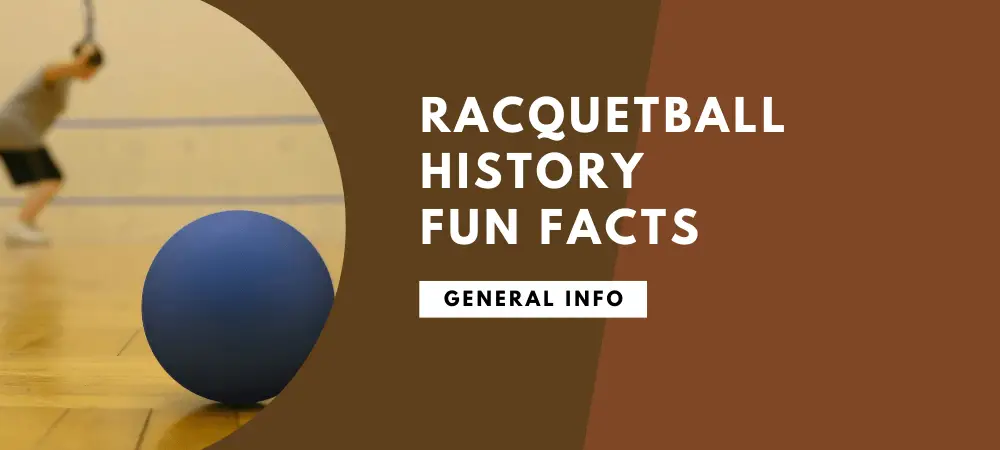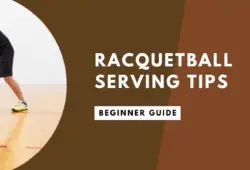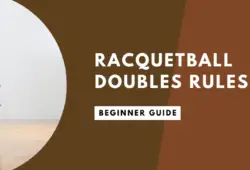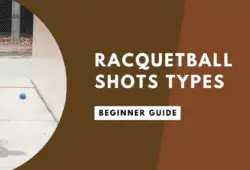Besides the fact that racquetball is played using a hollow rubber ball and a small stringed racquet in a court with three walls, how much more do you know about this popular indoor sport?
There are some fun facts which even the most ardent fans and players might not know about.
In this article, I’ve chosen 10 history fun facts about racquetball that I know you’d like to hear.
Looking for a reliable racquet? Here’s top racquetball racquets in 2019
Table of Contents
List of Facts About Racquetball History
#Fact 1: Beginning of the sport of Racquetball
Racquetball was developed early in the 20th century which makes it a very young sport compared to other games that are popular today.
The game made its first appearance in the 1920s, and its invention is often credited to Joseph G. Sobek – professional tennis, squash and handball player from Connecticut.
Interestingly, racquetball was developed by combining tennis, squash, handball, paddleball and jai alai – a Spanish sport. Racquetball, as we know it today, borrows some aspects from all these five games and some striking differences as well.
One striking way in which the game stands out is that unlike similar racquet sports such as badminton and tennis, racquetball does not involve a net over which to hit the ball.
| # | Preview | Product | Rating | |
|---|---|---|---|---|
| 1 |
|
Penn Racquetballs (Pack of 12), Blue | Check today's price |
Also, unlike squash, racquetball has no tin above which the player is supposed to hit the ball. Other differences are better explained in this video:
#Fact 2: Which spelling is correct? Racquetball or racketball?
Have you ever wondered where the correct spelling is ‘racquetball’ or ‘racketball’ or both?
Well, it all depends on the regional context. While Americans play racquetball, the same sport goes by racketball in Britain and Australia.
Besides the name though, there are also differences in the two games.
For starters, racquetball uses a bigger, bouncier, less dense ball than that used to play racketball.
Additionally, the racketball court is ideally a squash court which means that it is substantially shorter and wider than a standard racquetball court.
#Fact 3: Different rules exist in racquetball
The floor, ceiling, and walls of the court all count as legal playing surfaces but once again, this tends to depend on the region/country in which the game is being played.
While the ball touching the ceiling counts as a valid play in American racquetball, this is considered a foul in racketball meaning the latter has one less legal playing surface.

#Fact 4: Who gave racquetball its name?
Although it was Joseph G. Sobek that invented racquetball, he was not the one that named it so.
Initially, Sobek named the game ‘paddle rackets’ and consequently founded the National Paddle Rackets Association (NPRA), in 1952. It was Bob McInerney – a professional tennis player, who started calling the game ‘racquetball’ and with time, the name slowly took over.
The International Racquetball Association (IRA) founded by Robert Kendler in 1969 was based on Bob’s coinage of the name ‘racquetball.’
#Fact 5: Beginning of the NPRA with Sobek
Once Sobek founded NPRA in February 1952, he codified the playing rules and had them printed as a booklet.
He then took it upon himself to promote the sport by distributing this booklet to all YMCAs in the United States.
His efforts bore fruit, seeing the game rapidly become very popular, primarily because there already existed about 40,000 handball courts (in YMCAs and Jewish Community Centres) where racquetball could be played.
Despite its fast rise to popularity, racquetball hit a snag in the 1980s when its popularity began to decline and this period saw many clubs tearing down their already-erected racquetball courts.
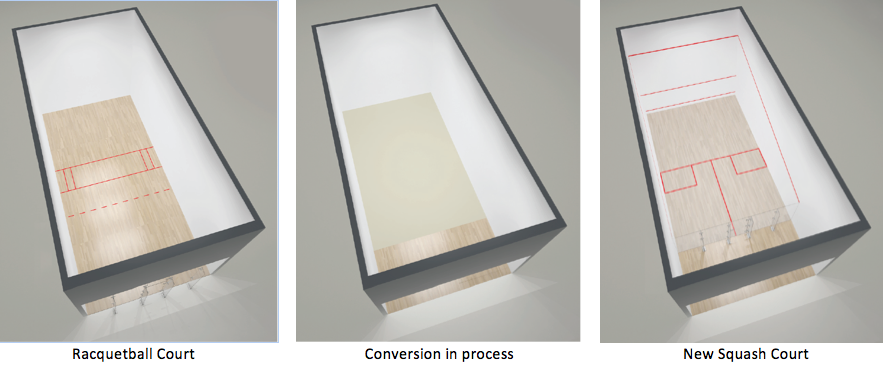
#Fact 6: Racquetball first was used because it helps players easily a lot of calories in a short period of time
Athletes were also drawn to racquetball because being a high-intensity sport; it gave them a great workout.
Statistically, the average racquetball game lasts for 20 minutes, and in this period, a player will cover a distance of approximately 3,650ft.
In case you do not find this to be a very impressive figure, then did you know that the average number of calories burned during a game ranges from 640/hour to 794/hour?
| # | Preview | Product | Rating | |
|---|---|---|---|---|
| 1 |
|
HEAD Racquetball Goggles - Impulse Anti Fog & Scratch Resistant Protective Eyewear w/Clip On... | Check today's price |
Racquetball has both aerobic and anaerobic benefits, and the game works nearly every muscle group in the human body.
During a typical racquetball game, players work at a constant 75% – 85% of their maximum heart rate.

#Fact 7: Some interesting statistics about Racquetball
The number of racquetball players’ worldwide stands at an estimated 5.6 million players.
The majority of this population is youth-oriented, falling in an age range of 12-34 age range, whereas the frequent players (those who play 25 or more times a year) fall within the 25-44 year age range.
One interesting statistic is that racquetball players are significantly more upscale than the general population, meaning this sport is more popular among people in professional/managerial occupations, and those with household incomes of $50,000+.
#Fact 8: Racquetball is a full medal sport
There are racquetball World Championships held annually in August, and this has been happening since 1981.
However, a significant milestone wasn’t reached until 1995 when racquetball was approved by the International Olympic Committee as a Pan American Games sport, consequently seeing the game make its debut as a full medal sport at the 1995 Pan-American Games held in Argentina.
Besides the Pan-American Games, racquetball is also a full medal sport in:
- The Central American Caribbean Games
- The Pacific Rim Championships
- The Central American Games
- The South American Games
- The Bolivian Games
- The World Games

#Fact 9: Different colors of the ball in Racquetball mean different things
Racquetball is played using hollow rubber balls, and these come in a variety of colors (green, blue, purple, red, black and pink).
Well, did you know that the different colors indicate the playing performance of the balls?
The most commonly used ball is the blue one, and this is because it is the most neutral one, offering average speed and accuracy of contact.
A black ball is designed to move slower hence making it suitable for use in tournaments for senior players.
On the other hand, the red ball is the fastest, therefore, allowing for a quicker pace. Ben Croft better explains it in this video:
#Fact 10: Hogan..Racquetball’s genius player
Marty Hogan is considered one of the greatest racquetball players of all time, revolutionizing the game when at one point, he gave a serve that drove the ball a staggering 142 miles per hour.
Hogan was the first millionaire in the history of the sport, and when he won the Pro Racquetball Nationals, the Outdoor Racquetball Nationals, and the Paddleball Nationals, all held in 1979, he set his mark as being the only player who’s ever won all three titles in a single year.
Throughout his 14-year career (from 1976 to 1990), Hogan won more than 100 titles (both nationally and internationally) and 6 U.S national championships.
He was such a spectacular racquetball player that during this period, he ranked either number one or two in the world.
Final words about racquetball history
Despite not having a long and involved history similar to that of other popular sports, racquetball has impressively come a long way evident in the fact that it is the youngest ever sport to be noticed by the U.S Olympic Committee.
Being a part of the U.S Olympic Festival is a good sign that the game shall one day get to the real Olympics.
And the future is looking brighter than ever for the sport of racquetball and its fans all over the world.

